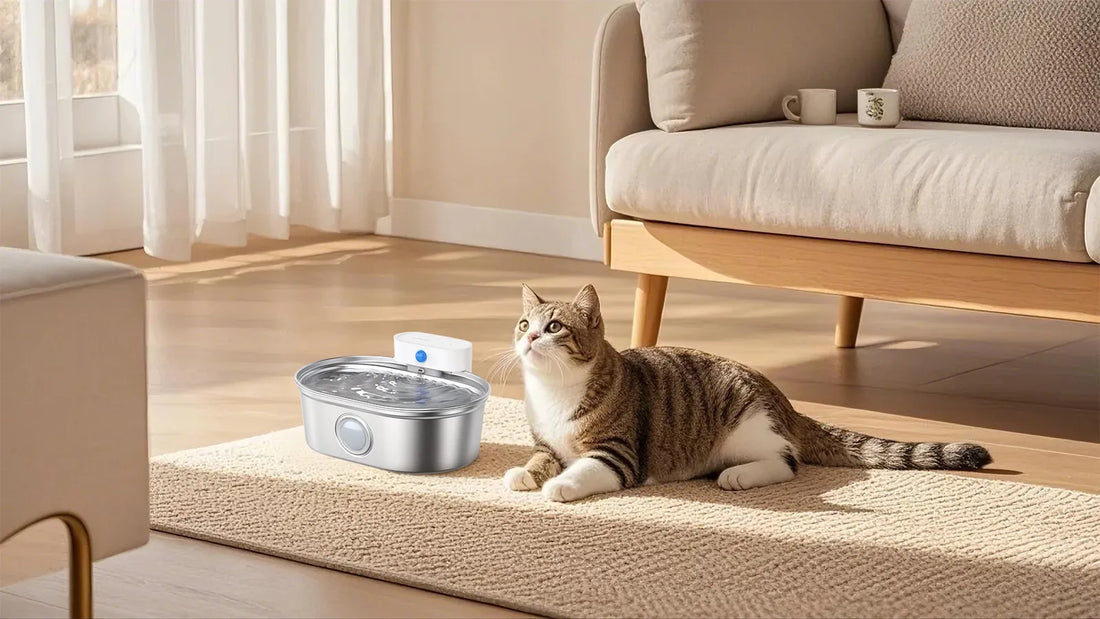Keeping your cat hydrated is essential for their health, but many cat owners struggle with getting their feline friends to drink enough water. Cats are naturally inclined to consume less water than other pets, which can lead to health issues like urinary tract infections and kidney problems. If you're wondering how to get your cat to drink more water, you're not alone. This article will explore practical and proven methods to encourage your cat to stay hydrated.
Why Hydration is Crucial for Cats
Cats have a low thirst drive compared to other animals, a trait inherited from their desert-dwelling ancestors. In the wild, cats obtained most of their moisture from their prey, which consisted of about 70-80% water. However, domestic cats often consume dry food, which contains only about 10% water. This discrepancy can lead to chronic dehydration if not addressed. Proper hydration supports kidney function, aids digestion, and helps maintain healthy skin and coat.
Signs Your Cat May Be Dehydrated
Before diving into solutions, it's important to recognize the signs of dehydration in cats. Common symptoms include lethargy, dry gums, loss of appetite, and sunken eyes. You can also perform a simple skin elasticity test by gently pinching the skin on the back of your cat's neck. If the skin doesn't snap back quickly, your cat may be dehydrated. If you suspect dehydration, consult your veterinarian immediately.
Tips to Encourage Your Cat to Drink More Water
1. Provide Fresh Water Daily
Cats are notoriously picky about their water. Stale or contaminated water can deter them from drinking. Ensure your cat's water bowl is cleaned daily and filled with fresh, clean water. Some cats prefer running water, so consider using a cat water fountain to mimic a natural water source.
2. Use Multiple Water Stations
Place several water bowls around your home, especially in areas where your cat spends most of their time. This makes it convenient for your cat to access water whenever they feel thirsty. Avoid placing water bowls near their litter box, as cats prefer to keep their eating and elimination areas separate.
3. Experiment with Different Bowls
The type of bowl you use can influence your cat's drinking habits. Some cats prefer ceramic or stainless steel bowls over plastic ones, which can retain odors. Additionally, shallow bowls are often more appealing, as they prevent your cat's whiskers from touching the sides.
4. Add Water to Their Food
If your cat is reluctant to drink water, try adding it to their food. Mixing water with wet food can increase their moisture intake significantly. For cats on a dry food diet, consider soaking the kibble in water for a few minutes before serving.
5. Offer Flavored Water
Some cats are more inclined to drink water if it has a slight flavor. You can add a small amount of low-sodium chicken broth or tuna juice to their water to make it more enticing. Be sure to use these additives sparingly to avoid overloading your cat with sodium.
6. Keep Water at the Right Temperature
Cats can be sensitive to water temperature. Some prefer cool water, while others enjoy it at room temperature. Experiment to see what your cat prefers and adjust accordingly.
7. Encourage Play Near Water
Engaging your cat in play near their water bowl can pique their interest in drinking. Use toys to guide them toward the water, and reward them with praise or treats when they take a drink.
8. Monitor Their Water Intake
Keep track of how much water your cat is drinking daily. This will help you identify any changes in their drinking habits and address potential issues early. If your cat's water intake drops suddenly, consult your veterinarian.
When to Seek Veterinary Advice
If you've tried multiple methods and your cat still isn't drinking enough water, it's time to consult your veterinarian. Underlying health issues, such as kidney disease or diabetes, could be affecting their thirst. Your vet may recommend specialized diets, medications, or other interventions to address the problem.
Encouraging your cat to drink more water doesn't have to be a daunting task. By understanding their preferences and making small adjustments to their environment, you can help ensure they stay hydrated and healthy. Remember, a well-hydrated cat is a happy cat, and your efforts will go a long way in supporting their overall well-being.













